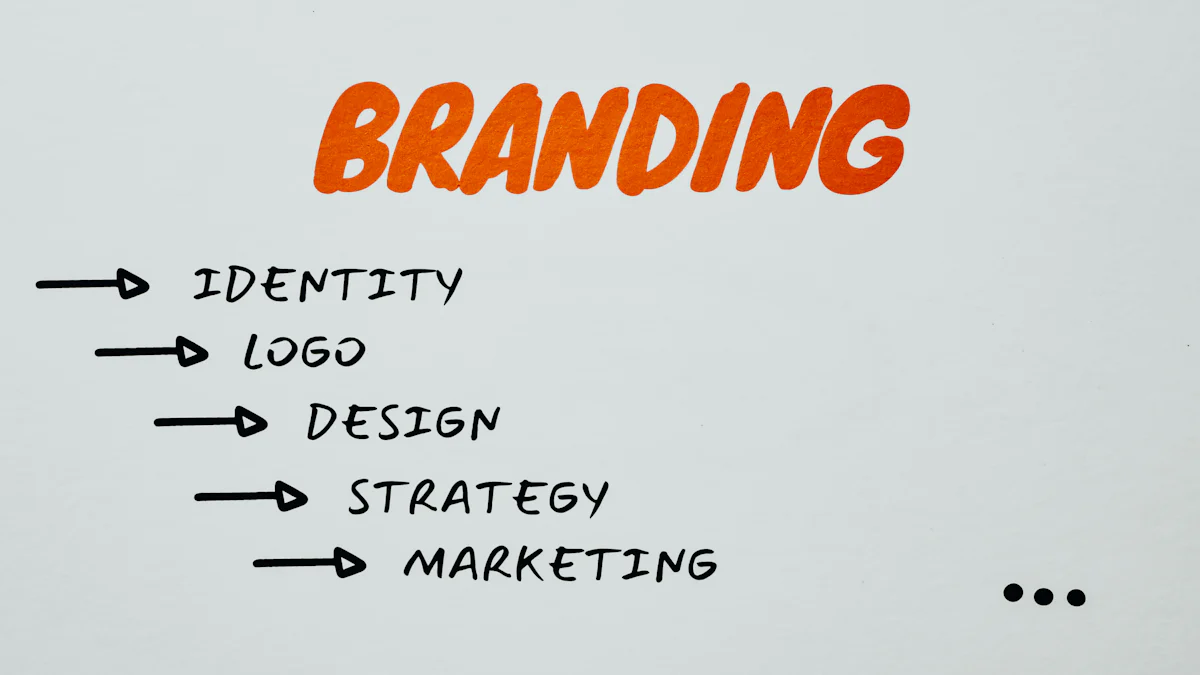How to Develop an Effective Branding Content Strategy for 2025

The way you approach branding in 2025 will define your success. A forward-thinking branding content strategy isn’t just a nice-to-have—it’s essential. Why? Because the digital landscape is evolving faster than ever. Emerging technologies like AI, AR, and VR are reshaping how brands connect with audiences. Personalization is no longer optional; it’s expected.
Take a look at these stats:
| Statistic | Value (%) |
|---|---|
| Marketers with documented content strategy rating it as effective | 29 |
| B2B marketers expecting content marketing budget increase in 2025 | 46 |
| B2B marketers expecting investment in video to increase in 2025 | 61 |
These numbers show the growing importance of planning ahead. So, how can you stay ahead of the curve? By embracing trends like voice technology, social commerce, and immersive experiences. The time to act is now. Start building a strategy that sets your brand apart.
Understanding Branding Content Strategy in 2025
What Is a Branding Content Strategy?
A branding content strategy is your roadmap for creating and sharing content that reflects your brand’s identity and values. It’s not just about posting on social media or writing blogs. It’s about answering three key questions: Why are you creating content? Who are you helping? How will you stand out?
Think of it as a four-phase process: planning, creation, maintenance, and unpublishing. Each phase ensures your content serves a purpose and aligns with your branding goals. For example, during the planning phase, you decide what stories to tell. In the creation phase, you bring those stories to life. Maintenance ensures your content stays relevant, while unpublishing removes outdated material.
Here’s a quick breakdown of its core components:
| Core Component | Description |
|---|---|
| Content Creation | Defines what content supports your marketing strategy. |
| Brand Alignment | Aligns your brand’s story, voice, and tone with your business objectives. |
| Consistency | Ensures your content remains effective and cohesive across all platforms. |
When you have a clear branding content strategy, you’re not just creating content—you’re building trust and loyalty.
Why Branding Matters for Trust and Loyalty
Your brand is more than a logo or tagline. It’s the promise you make to your audience. When people trust your brand, they’re more likely to stick around. Trust leads to loyalty, and loyalty turns customers into advocates.
In 2025, trust will matter more than ever. Consumers will expect transparency and authenticity. They’ll want to know your values and how you align with theirs. A strong branding content strategy helps you communicate this effectively. By sharing stories that resonate emotionally, you can build deeper connections.
Think about it: Would you buy from a company you don’t trust? Probably not. That’s why branding is the foundation of long-term success.
Key Trends Shaping Branding in 2025
The branding landscape in 2025 will be shaped by exciting trends. Here are some you can’t ignore:
- Social Commerce: Shopping directly on social media platforms will make buying easier than ever.
- Video Dominance: Short-form and live videos will grab attention and keep audiences engaged.
- Augmented Reality (AR): AR will let customers interact with products in immersive ways.
- Voice Technology: Voice-activated devices will make it easier for people to discover your brand.
- AI Integration: AI will personalize customer experiences and streamline your workflows.
To stay ahead, focus on three things: personalization, video content, and AR. Personalization will help you connect with your audience on a deeper level. Video will keep them engaged. AR will set you apart by offering unique experiences.
Brands that embrace these trends will thrive. Will yours be one of them?
Building a Strong Foundation for Your Brand Strategy
Conducting a Brand Audit
Before you can move forward, you need to know where your brand stands. A brand audit helps you uncover strengths, weaknesses, and opportunities. It’s like taking a snapshot of your brand’s current identity and performance. Here’s how you can do it step by step:
- Analyze your brand elements, like your logo, tagline, and messaging, to see what’s working and what’s not.
- Evaluate how your target audience perceives your brand. Are you meeting their expectations?
- Review your current strategies and performance metrics.
- Study the market landscape to identify trends and gaps.
- Dive into audience research to understand their demographics and psychographics.
- Check out your competitors. What are they doing better, and where can you stand out?
- Pinpoint your unique value proposition. What makes your brand special?
- Assess your visual and verbal identity. Does your tone, language, and design align with your goals?
- Conduct a SWOT analysis to map out internal and external factors.
- Use the insights to create an actionable plan for improvement.
A thorough brand audit ensures your brand strategy is built on a solid foundation.
Researching Your Audience in 2025
Understanding your target audience is crucial for a successful digital strategy. In 2025, audience preferences will evolve rapidly, and you’ll need the right tools to keep up. Here are some methods to help you stay ahead:
- Use Brand24 for real-time social media monitoring and sentiment analysis.
- Leverage SEMrush to uncover audience insights through competitive analysis and keyword research.
- Track customer journeys with HubSpot Analytics to see how they interact with your brand.
- Dive into Google Analytics to analyze website traffic and conversions.
- Explore Facebook Audience Insights for a free and detailed look at your audience data.
These tools help you understand what your audience wants, how they behave, and where they spend their time. When you know your audience inside out, you can create content that resonates and strengthens your brand presence.
Setting Goals and KPIs for Success
Without clear goals, your brand strategy is like a ship without a compass. Start by defining what success looks like for your brand. Then, set measurable KPIs to track your progress. Here are some best practices:
- Combine qualitative methods like interviews and testimonials with quantitative tools like surveys and analytics.
- Monitor brand performance metrics to ensure growth in brand equity and customer loyalty.
- Use social listening tools to track brand mentions and market sentiment.
- Regularly update your goals to align with changing audience preferences and market trends.
- Benchmark your performance against competitors to identify gaps and opportunities.
By setting clear goals and tracking the right KPIs, you can ensure your documented content strategy stays on course and delivers results.
Leveraging Technology for a Global Content Strategy

AI for Personalization and Efficiency
AI is transforming how you can approach your global content strategy. It’s not just about automating tasks—it’s about creating meaningful connections with your audience. Imagine being able to tailor every piece of content to match your customer’s preferences. AI makes this possible by analyzing behavior and delivering personalized experiences. For example, it can help you craft email campaigns or recommend products based on browsing history. This level of personalization can boost your marketing ROI and even lift sales by 10%.
AI also improves efficiency. Tools powered by AI can automate content creation, ensuring tone consistency across platforms. They can even identify bottlenecks in your marketing processes, saving you time and effort. Studies show that AI can increase productivity by up to 40% while improving data accuracy by 80%. This means you’ll have reliable, real-time insights to guide your decisions. With AI, you can scale your global content strategy without losing the personal touch.
AR and VR for Immersive Experiences
Augmented reality (AR) and virtual reality (VR) are game-changers for creating unforgettable brand experiences. These technologies let you bring your products and stories to life in ways that were once unimaginable. Picture this: a customer trying on clothes virtually or exploring a product in their own home through AR. These experiences make your brand more interactive and memorable.
VR takes it a step further by immersing your audience in your story. You can create virtual tours, gamified challenges, or even transport users to exotic locations. These experiences build emotional connections, leaving a lasting impression. Whether it’s a virtual try-on or an immersive product demo, AR and VR help you stand out in a crowded market. They’re essential tools for any forward-thinking global content strategy.
Blockchain for Transparency and Trust
Trust is the foundation of any successful brand, and blockchain technology helps you build it. Blockchain creates an immutable ledger that records every transaction. This ensures accountability and reduces the risk of fraud. Customers can trace the journey of your products, verifying their authenticity and ethical sourcing.
In an era where misinformation is rampant, transparency is more important than ever. Blockchain lets your audience see the truth behind their purchases, fostering confidence in your brand. A study by PwC found that 71% of consumers avoid companies they don’t trust with their data. Blockchain’s decentralized nature protects user information, strengthening the bond between you and your customers. By integrating blockchain into your global content strategy, you can set yourself apart as a brand that values honesty and integrity.
Creating and Distributing Effective Content

Storytelling to Build Emotional Connections
Storytelling is one of the most powerful tools in your marketing plan. It’s not just about telling a story—it’s about making your audience feel something. When you craft a story, focus on creating characters your audience can relate to. People connect with stories when they see themselves in the characters. Use conflicts or challenges that resonate with their personal experiences. This emotional resonance keeps them engaged and builds trust.
Authenticity is key. Your audience can tell when a story feels forced or fake. Genuine emotions and well-written narratives make your brand memorable. For example, a story about how your product solved a real-life problem can inspire loyalty. When you use storytelling effectively, you’re not just sharing content—you’re building emotional connections that last.
Repurposing Content for Maximum Reach
Creating content takes time and effort, so why not make the most of it? Repurposing is one of the most effective content strategies to maximize your reach. Start by using the COPE (Create Once, Publish Everywhere) strategy. Adapt your content for multiple platforms. For instance, turn a blog post into a series of social media posts or an infographic.
Break long-form content into bite-sized pieces. A detailed guide can become a series of short videos or email campaigns. You can also compile related content into an eBook or whitepaper to attract leads. Don’t forget to refresh older content to keep it relevant. Updating statistics or adding new insights can breathe new life into your marketing plan. Repurposing ensures your content works harder for you, reaching more people without starting from scratch.
Social Media Trends and Influencer Collaboration
Social media is constantly evolving, and staying on top of trends is crucial for your strategic marketing plan. Features like Instagram’s collaboration tool let you partner with influencers to expand your reach. By sharing content with their audience, you can boost brand awareness.
Long-term influencer partnerships are becoming more popular. Brands like Sephora and Glossier have shifted to ambassador programs, where influencers represent the brand over time. This approach feels more authentic and builds stronger connections with audiences. Collaborating with influencers who align with your values can enhance customer engagement and make your marketing plan more effective. Social media trends and influencer collaborations are essential for staying relevant in today’s digital landscape.
Measuring and Adapting Your Branding Content Strategy
Tracking Key Metrics for Success
You can’t improve what you don’t measure. Tracking the right metrics helps you understand how well your branding efforts are working. Focus on metrics that give you a clear picture of your brand’s performance. Here’s a quick guide to the most critical ones:
| Metric | Description |
|---|---|
| Brand Equity | Reflects the value of your brand and its effect on pricing and profitability. |
| Market Share | Gauges the demand for your product or service compared to other brands. |
| Conversion Rate | Measures how well you convert brand awareness and perception into sales and customers. |
| Retention Rate | Shows how successful you are in retaining customers and preventing them from switching brands. |
| Brand Awareness | Indicates the level of recognition and recall of your brand among consumers. |
| Net Promoter Score | Assesses customer satisfaction and loyalty based on their likelihood to recommend your brand. |
| Customer Lifetime Value | Estimates the total revenue a business can expect from a single customer account. |
Use both quantitative data, like web analytics and sales reports, and qualitative data, like testimonials and focus groups. Together, they give you a full view of your digital marketing content strategy’s success.
Using Analytics to Refine Your Strategy
Analytics tools are your best friend when it comes to improving your strategy. They help you see what’s working and what’s not. For example, tracking audience engagement metrics shows which content resonates most. If a certain type of post gets more likes or shares, you know to create more of it.
SEO data is another goldmine. It reveals how users interact with your content and helps you refine it for better visibility. Regular content audits also uncover gaps in your offerings. Maybe your audience wants more video content, or perhaps they’re searching for topics you haven’t covered yet. By analyzing these insights, you can adjust your digital marketing content strategy to meet their needs.
Don’t forget to establish a feedback loop. Ask your audience what they want to see more of. Their input ensures your content stays relevant and engaging.
Staying Agile in a Changing Landscape
The digital world changes fast. To keep up, you need to stay flexible. Build a team that thrives on change by hiring adaptable talent. Encourage continuous learning so your team can develop new skills and stay ahead of trends.
Keep an eye on industry shifts and competitor activities. If a new social media platform gains popularity, explore how your brand can use it. Regularly review your strategy and adjust based on what’s happening in the market. Agility isn’t just about reacting to change—it’s about anticipating it.
By staying proactive, you’ll ensure your branding content strategy remains effective, no matter how the landscape evolves.
The future of branding lies in how well you adapt to trends and technologies. Personalization, sustainability, and inclusivity will drive consumer choices in 2025. Digital-first experiences powered by AI and AR will redefine how customers interact with brands. To stay ahead, focus on these key takeaways:
- Conduct a brand audit to assess your market position and uncover opportunities.
- Maintain consistency across all touchpoints to build trust and recognition.
- Use AI and machine learning to enhance customer experiences.
Ready to start? Define your purpose by aligning your content with your mission and values. Set SMART goals to track progress and stay focused. Use storytelling to connect emotionally with your audience. The sooner you begin, the sooner you’ll see your brand thrive.
FAQ
What is the most important part of a content strategy?
The most important part is understanding your audience. When you know their needs, preferences, and behaviors, you can create content that resonates. This connection builds trust and loyalty, which are essential for long-term success.
How often should you update your content strategy?
You should review it quarterly or whenever major trends shift. Regular updates help you stay relevant and adapt to changes in audience behavior or technology.
Can small businesses benefit from a content strategy?
Absolutely! A well-planned content strategy helps small businesses compete with larger brands. It ensures your messaging is consistent and targeted, which builds trust and attracts loyal customers.
How do you measure the success of a content strategy?
Track metrics like engagement, conversion rates, and brand awareness. Tools like Google Analytics and social media insights can show what’s working and where you need to improve.
What role does storytelling play in a content strategy?
Storytelling creates emotional connections with your audience. It makes your brand memorable and relatable. When your stories align with your audience’s values, they’re more likely to trust and support your brand.
See Also
Crafting an Effective Brand Content Strategy for 2025
Seven Essential Steps for a Successful Brand Strategy in 2025
Developing a Strong Personal Brand Content Plan for 2025
